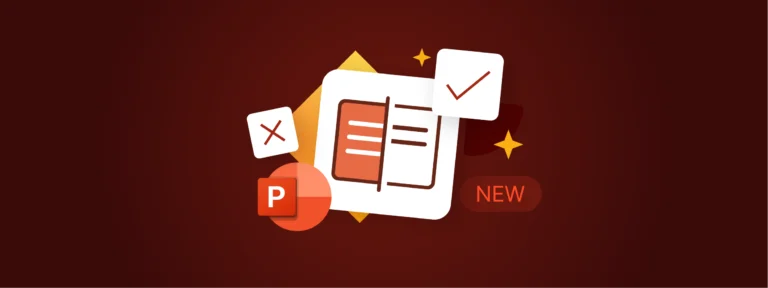UpSlide has a new look! After having guided many of our customers through their rebranding projects, it’s our turn to celebrate this milestone on our 10th anniversary.
A corporate rebrand is an important turning point in the history of a brand. It enables the company to update its image to better match its values, or its position in relation to the market. It is also a large-scale project that impacts not only the internal teams, but also customers, partners and prospects.
There are many questions to ask: How can you involve all the stakeholders? How should you organize the project? How do you ensure the adoption of your new brand?
We are going to share our best practices to support the change of identity – and exclusively, the new elements of our brand!
TL;DR
Many things can cause a brand to change their image: strategic repositioning, the need to modernize, or a change in ownership.
First, you must define the scope of the project, determine the necessary resources and timescale.
After you create your new visual identity – conduct user testing to ensure it is coherent with your customer’s perception of the brand.
When Is the Right Time to Rebrand?
What is a Visual Identity?
The visual identity of a brand consists of all the graphic elements that represent it:
- Logos
- Colors
- Fonts
- Iconography (graphic elements, photographs, pictograms, icons…)
All these graphic elements follow clear guidelines for use that are generally found in a guide: the graphic charter or brand guidelines. All the communication materials of a company follow this charter: this is how coherence and homogeneity are ensured.
Every year, many changes are made to visual identities. Recently, the management company Capzanine, now CAPZA, demonstrated their ambition to become international with a more dynamic and universal name. Our Creative Solutions team was happy to support them in making this change, most notably by redesigning their PowerPoint templates:
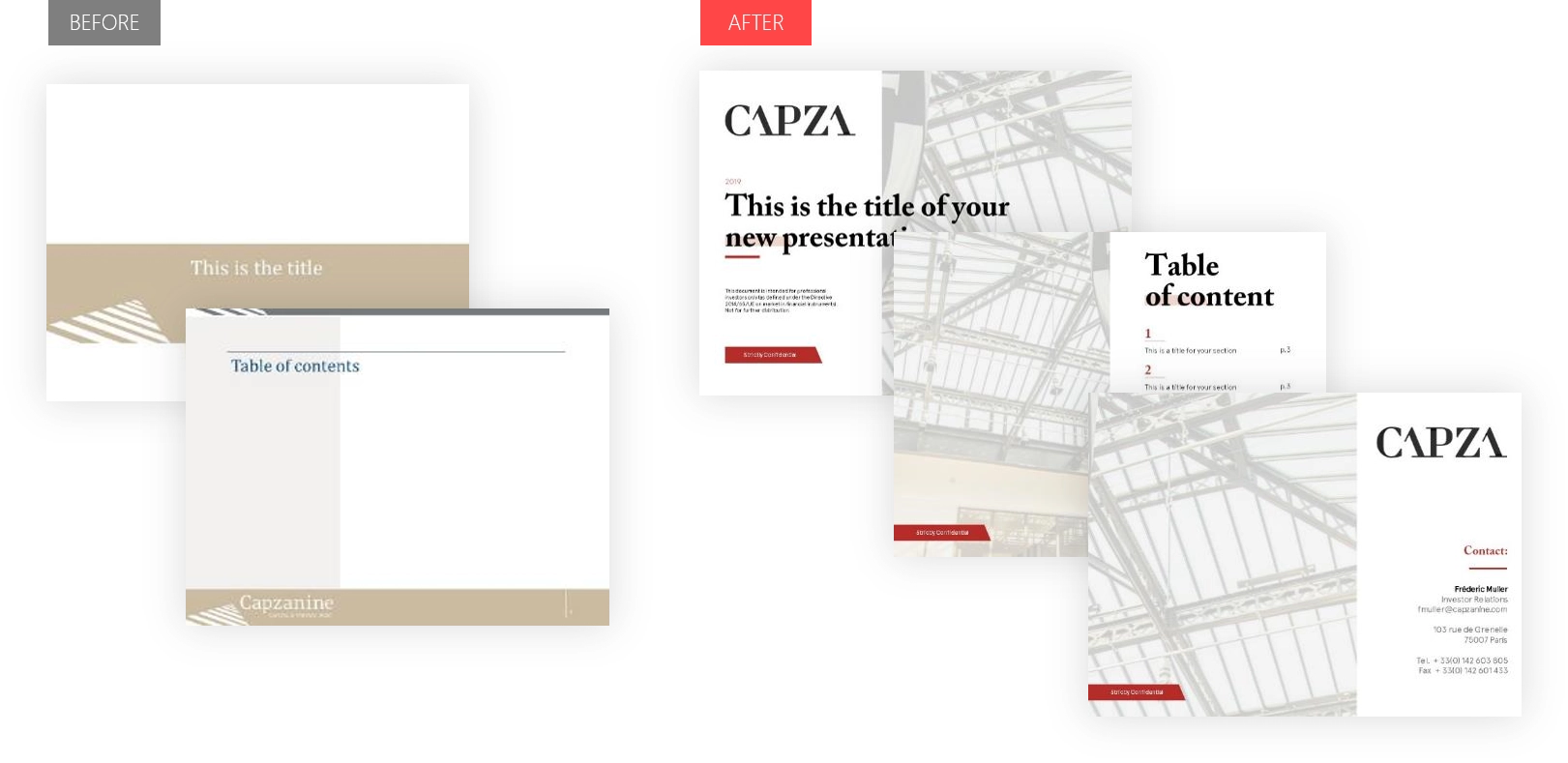
Why Do Brands Decide to Change Their Image?
There are many different reasons, and it can often be a combination of a few of these:
- Strategic repositioning to reflect a company’s new mission. In 2017, BNP Paribas Investment Partners announced its new strategy and the simplification of its organization by returning to its original name: BNP Paribas Asset Management.
- The need to modernize, like Banque Populaire, which unveiled a sleek logo in 2018.
- The strengthening of its corporate culture: two years ago, Banque Privée 1818 became Natixis Wealth Management in order to harmonize its brand in France, Luxembourg and Belgium.
- A change in ownership, following a merger/acquisition, for example. It’s likely that the neo-bank Shine, bought out this summer by Societe Generale, will adapt its visual identity to that of its new parent company in the coming months.
Changing identity must be carefully considered. After 10 years of business at UpSlide we have decided to modernize our brand image, with several objectives:
- To further embody our design pillar in order to inspire our clients and convey this expertise to them
- To reflect our tech DNA through branding with our strong focus on Power BI
- To express our desire to have a more positive impact by obtaining the B Corp certification.
Launch Your Rebrand Project
At the end of 2019 our co-founders, Antoine and Philippe, assigned the Creative Solutions team, which brings together the talents of our graphic designers and communication professionals, the mission of modernizing our graphic identity.
The first step for our team: define the scope. In order to work on a project of this magnitude, it is necessary to ask the following questions:
What is the Scope of the Project?
The goal is to determine which graphic elements (logo, colors, fonts, etc.) will evolve, be added or disappear. This allows you to understand which new files will be needed to update the company’s communication materials (website, brochures, templates, etc.).
What are the Necessary Resources?
Once the scope has been defined, it is important to determine which teams or service providers will propose, implement and communicate the new brand identity. For example, a team of graphic designers is essential to produce a new graphic charter and a marketing and/or IT team is essential to implement the changes on the website. If certain resources are not available internally, the relevant phases of the project will have to be outsourced.
What is the Timescale?
Finally, it is a good idea to contact the various people who have been identified in order to get them involved in the project and to be able to draw up a schedule that takes into account each person’s availability. It is good practice to carefully divide the main phases of the project before agreeing on the sub-steps in more detail. Here is an example of the process:
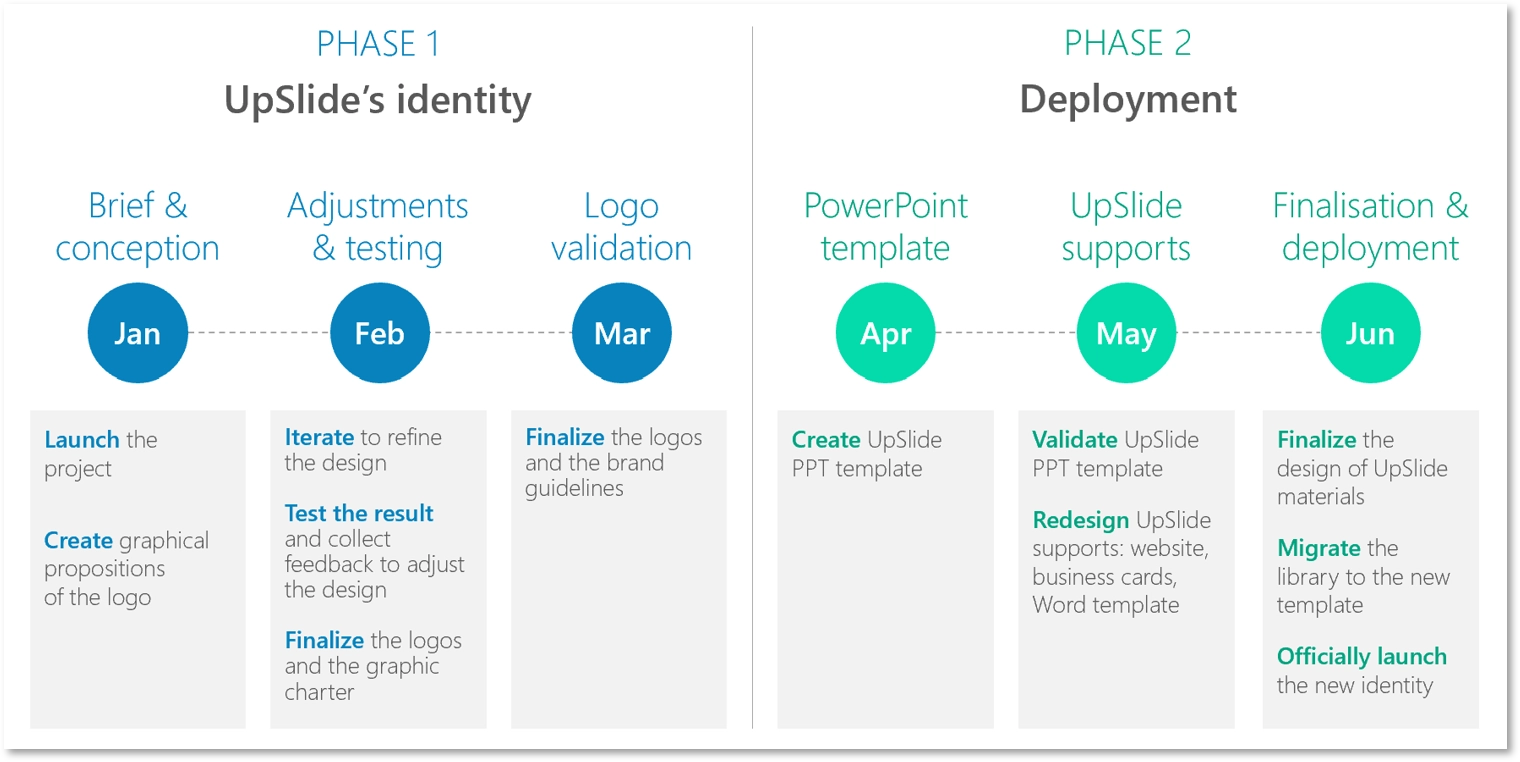
To answer these three questions, at UpSlide, we begin all our internal and external projects with a launch session: the kick-off meeting! Therefore, for the redesign of our corporate identity, we decided to start with the logo, from which the graphic charter will be derived (phase 1, above).
Top tip
We advise you to identify in advance the key roles in the project: who will be consulted, who will be involved and who will act as the client to make the final decision. To help clarify these roles, we start all our kick-offs with a slide to provide a framework for each person’s mission.
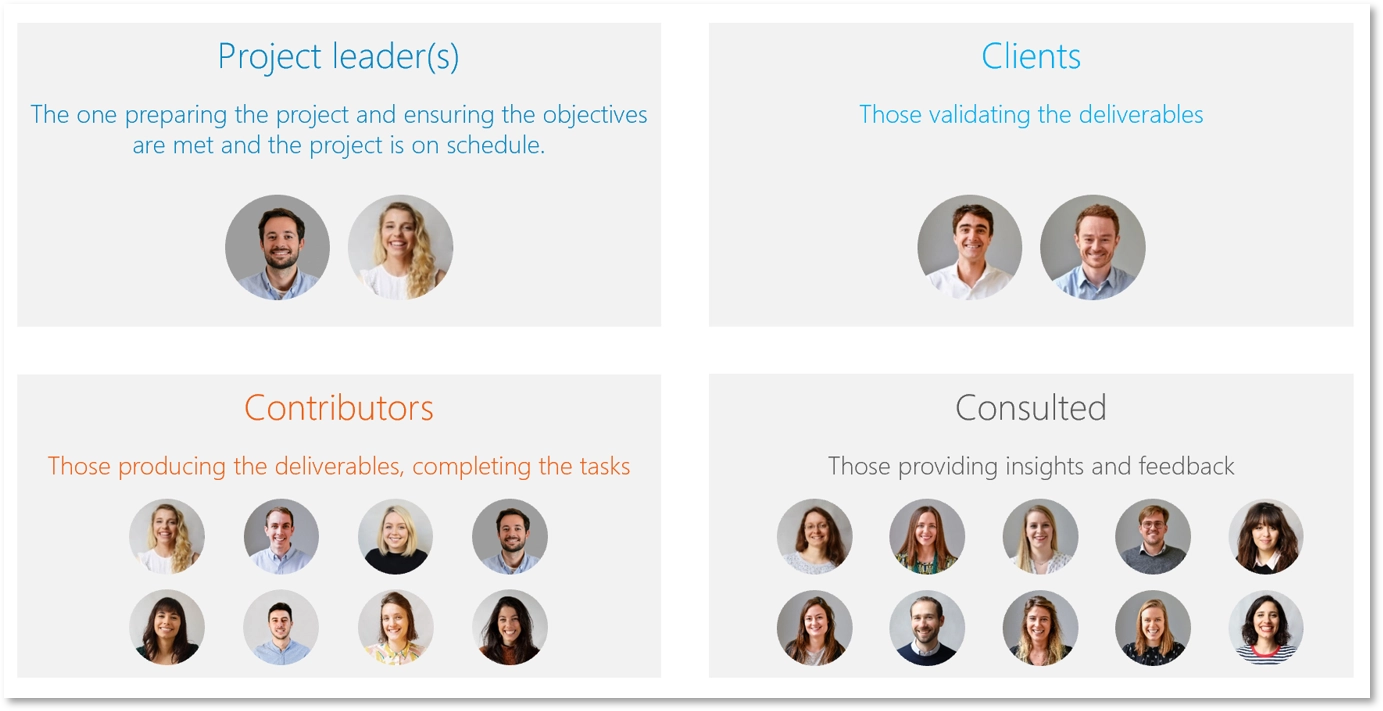
Create Your New Visual Identity
Every design phase begins with a brief, which provides the creative team with detailed instructions on the project’s objectives and its framework.
Initially, the graphic designers carry out research around the latest graphic trends in the industry, which they present in the form of moodboards. Here are some examples of moodboards created by our graphic designers around our three values – Excellence, Trust and Happiness at Work:
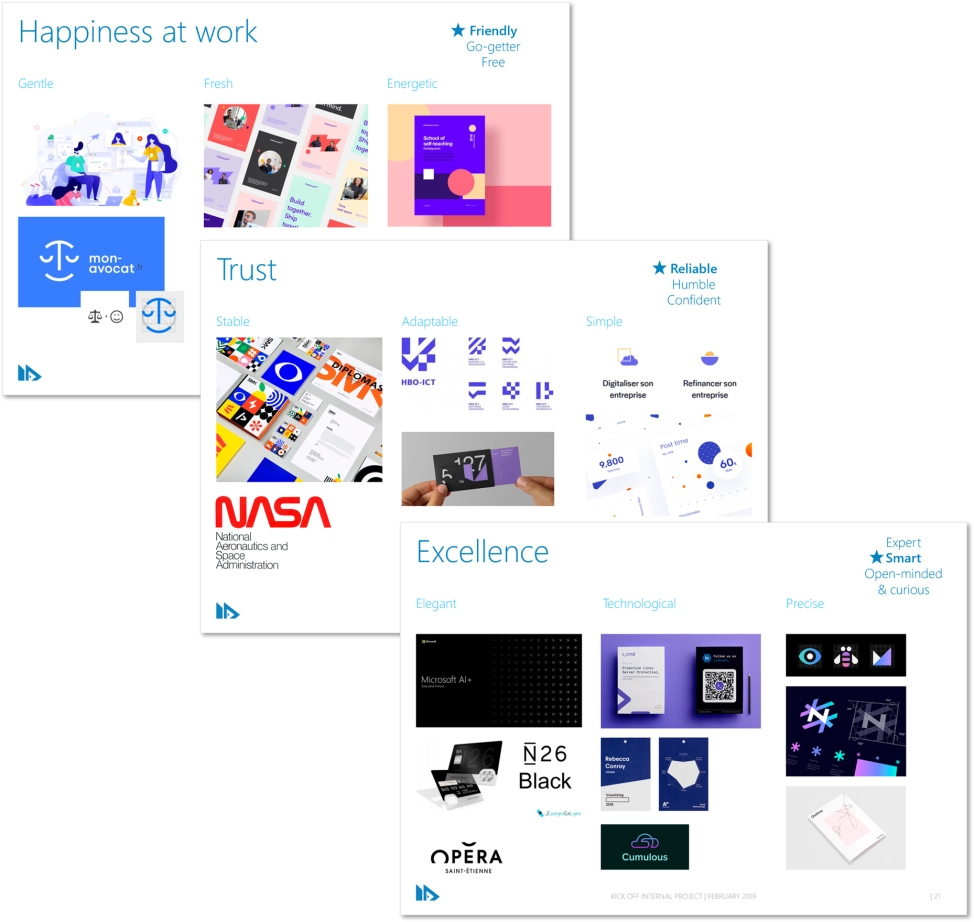
These moodboards allowed our co-founders to find some inspiration to illustrate our values, to give their opinions on their choices and to start the discussion with our graphic designers in order to create the brief.
Finally, this is followed by numerous back and forth meetings between graphic designers, consultants and decision-makers in order to agree on the chosen identity and to fine-tune the details. The logo usually crystallizes the brand’s DNA, its pillars and its spirit – so it’s usually the longest phase. Here are some of the first ideas for the new UpSlide logo, which we have developed after an important creative research phase by our graphic designers:
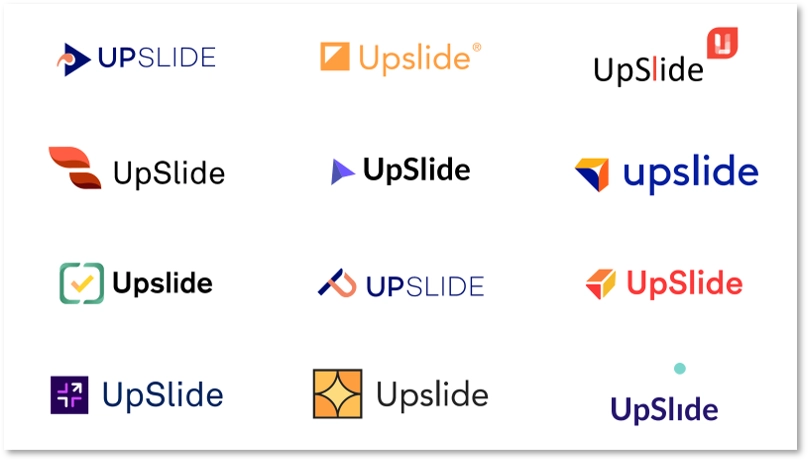
Conduct Customer Testing and Validation
Once the top three logos have been selected, it is one of our good practices to submit the final logos to people outside the project: this allows some creative avenues to be eliminated and others to be adjusted.
At UpSlide, we were particularly keen to gather the opinions of our users and clients. We therefore asked ten of our clients to give us their feedback on certain logos.
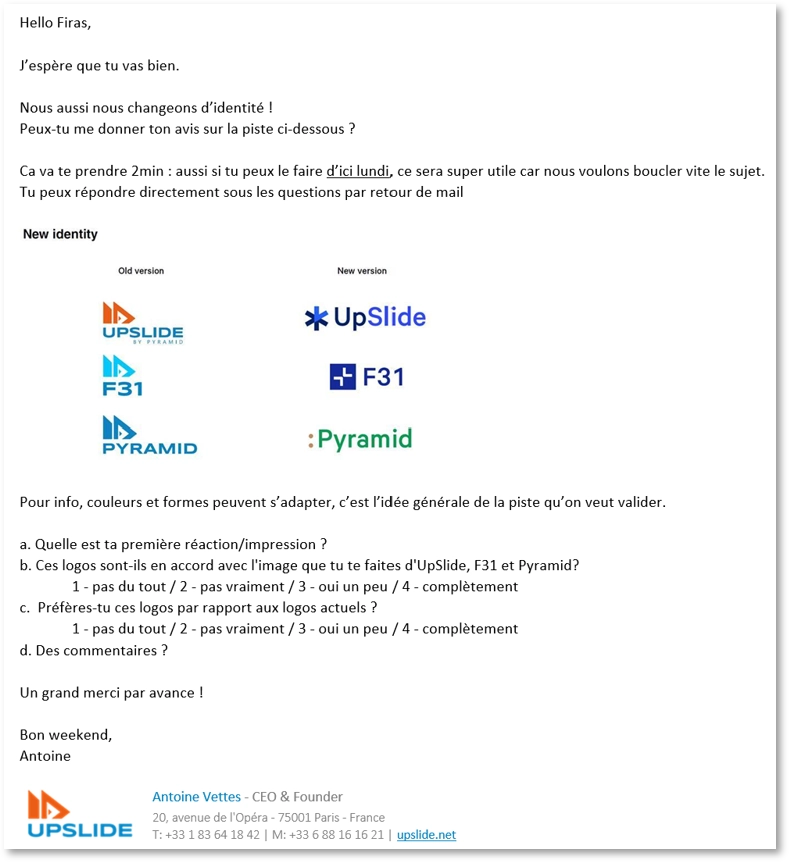
This testing stage helped speed up the decision-making process; by collecting the feedback of different sized companies, sectors and countries, we were able to validate and reject certain ideas according to their coherence with our customer’s perception of the UpSlide image.
We recommend testing with as many different people as possible, to ensure that the users are properly accounted for – for example, graphic codes abroad can be very different from those we are used to, so don’t limit yourself to borders if your scope is international!
A key illustration of this happened in March, when we submitted an initial logo to one of our clients in the US, who immediately told us that it looked like a very popular emergency icon in the United States. We quickly abandoned this idea in favor of others that were more relevant.
After many opinions and adjustments, the customers validated the new UpSlide logo, the basis of our graphic charter:
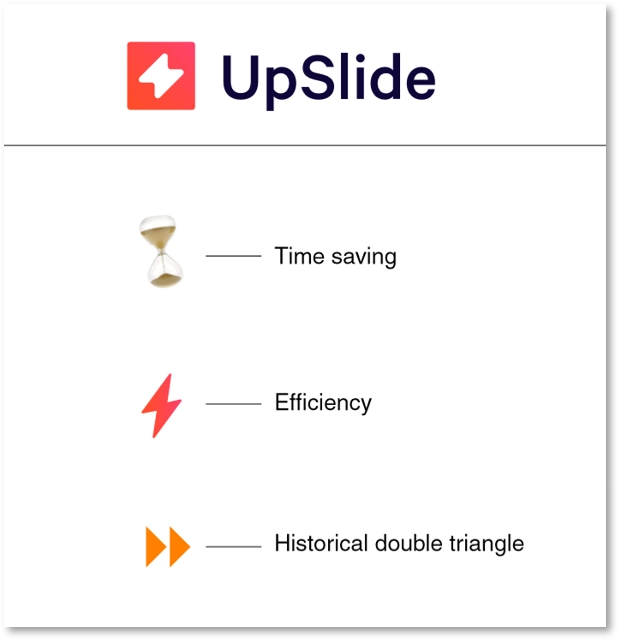
The selected logo embodies several elements of our corporate culture:
- Our mission, “Helping financial professionals work better”, illustrated by the hourglass symbol representing the time savings achieved by our users.
- The “Excellence” value, symbolized by the lightning bolt – a symbol of efficiency and creativity (the flash of genius, brainstorming, etc.).
- A nod to our historical logo, made up of two interlocking triangles.
This first step is crucial because it lays the foundations for the future rules of our graphic charter.
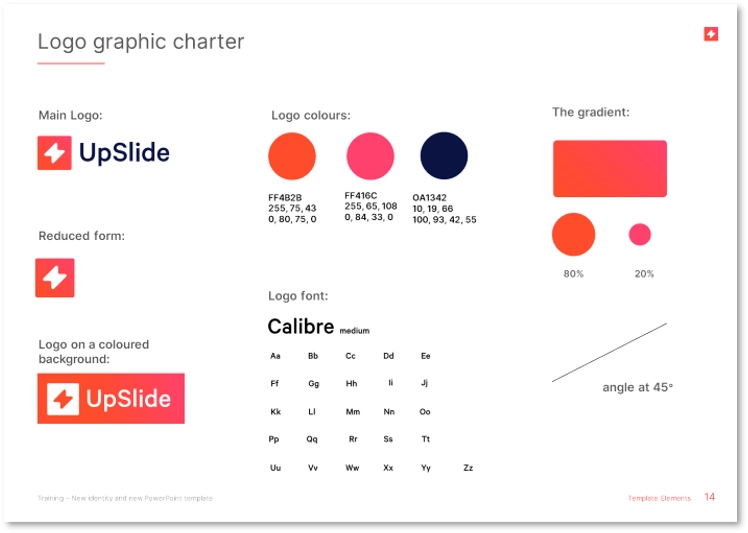
Deploy Your New Brand
It’s then a question of adapting the new graphic charter to all the elements identified during stage 2 – project launch – i.e. all the communication materials impacted by the new identity.
At UpSlide, many communication channels were affected:
Digital media:
- Product (our software!)
- PowerPoint, Excel and Word templates
- Customer and internal presentations
- Website
- Social networks
- Email signatures
- Newsletters
Physical materials:
- Brochures
- Brand book
- White papers
- Business cards
In order to effectively monitor the progress of your new brand image, we recommend developing a retro plan with the help of the teams and partners involved in the project. It is essential to prepare well in advance for this phase; depending on the amount of media impacted, it can range from a few days to several months.
Top tip
At UpSlide, we use a dashboard on Trello. This enables us to prioritize, distribute and track the different tasks assigned to the teams involved.
Ensure Adoption for Your New Visual Identity
Once all materials are updated and validated, you need to ensure that all your brand stakeholders are on board with these new changes. Adoption is a critical process that takes place before, during and after the project.
Discover 4 mistakes to avoid with your rebrand launch
Onboarding
The teams already contributing to the project will be enthusiastic to reveal the fruits of their labor. Indeed, they will have been working hand in hand for months and will be getting impatient as D-Day approaches. We recommend having a good variety of departments involved in the project from the beginning, in addition to the traditional communication and marketing teams: after all, the Finance team also has its say as budget manager.
Why not unveil the new graphic charter internally a few days before the official launch? It’s a good way to create excitement, but also to test different media before their release to customers and prospects!
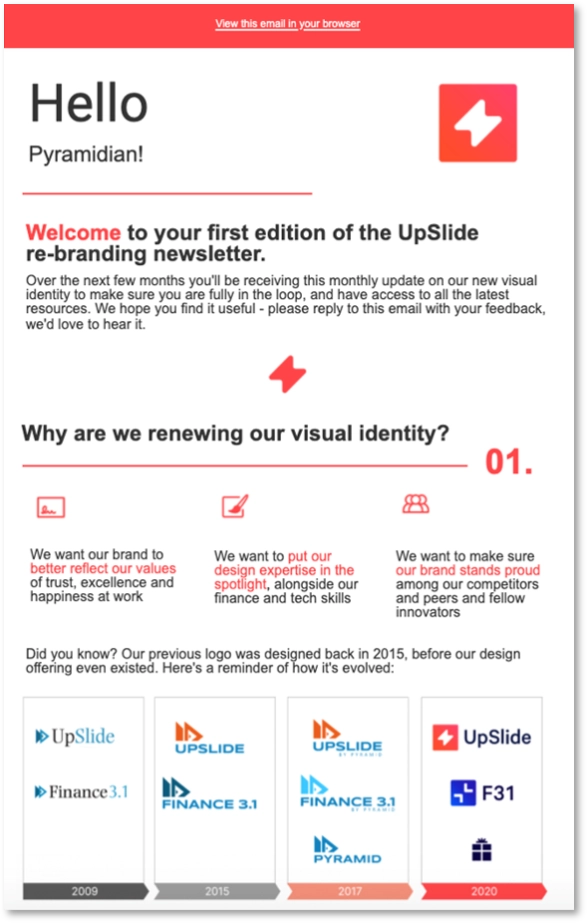
During the creation phase, it is also important to include as many external people as possible: customers, partners, blog readers and social network subscribers. To do this, there are several techniques:
- Testing different logos with your most loyal customers
- Initiating curiosity with a video teaser
- Keeping your teams on the edge of their seats via a series of ‘teaser’ emails
- Make your users guess the logo you have chosen
Announcement
The big moment has arrived! We recommend preparing a campaign in order to share the news on all the communication channels at your disposal:
- Up-to-date website
- Emails to customers
- Publications on social networks
- Blog articles
- Press release
- Email signature
All materials for the new charter must be ready on the day. On the other hand, it is not necessary to deploy everything at once, but rather to spread your communications over time. As in advertising, the secret is repetition!
Internal training
Finally, once the new identity has been officially announced, it is important to ensure that it will last and definitively replace the old one. It is therefore important to monitor the use of the new templates when creating new documents by the different teams, and the conversion of old documents and existing presentations to the new charter.
At UpSlide, being specialized in the design of PowerPoint, Excel and Word templates, we have made sure we have trained all our teams in the use of our new templates. This will help us guarantee the adoption and consistency of our new brand image!

This sixth and final step concludes the visual identity change process. We hope this article will help you prepare for your re-branding, if it’s something you are thinking about.
We would love to hear what you think of our new identity! Share your thoughts with us in the comments.
If, in turn, you wish to modernize your brand image or redesign certain elements of your visual identity:



